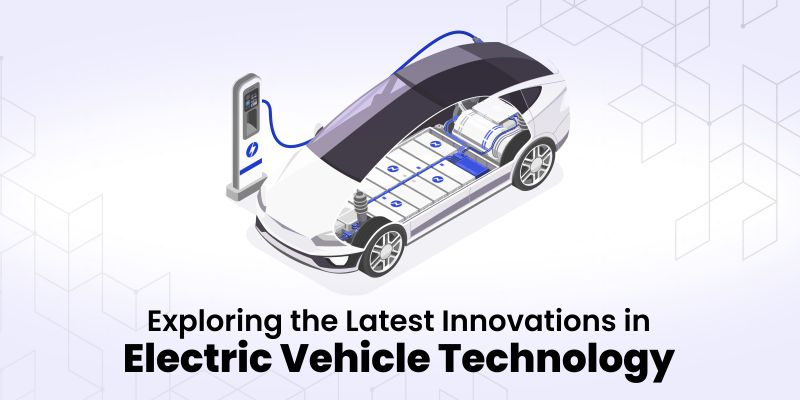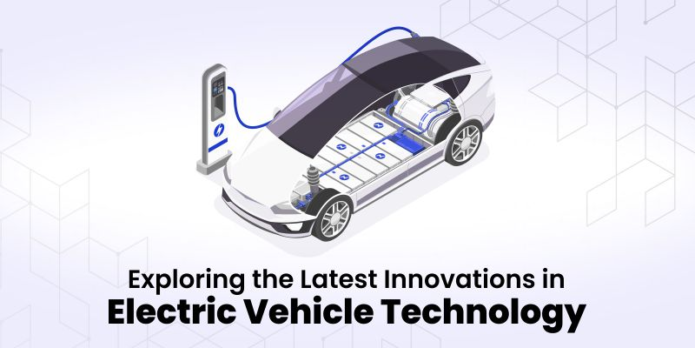The electric vehicle (EV) landscape is witnessing an era of unprecedented innovation, driven by a collective commitment to sustainable transportation and advancements in technology. As the automotive industry undergoes a transformative shift towards electrification, here’s a glimpse into the latest innovations shaping the future of electric vehicle technology. Understanding and staying abreast of these cutting-edge developments is not only essential for industry professionals but also underscores the significance of staying informed through specialized training programs, such as EV Training, to navigate and contribute to this dynamic and environmentally conscious sector.

Advancements in Battery Technology:
Solid-State Batteries:
The development of solid-state batteries stands out as a monumental breakthrough in the realm of electric vehicle (EV) technology. Unlike traditional lithium-ion batteries, solid-state batteries introduce a revolutionary paradigm with distinct advantages. Offering higher energy density, these batteries empower electric vehicles with increased range, addressing one of the longstanding concerns associated with EV adoption. The significance of solid-state batteries further extends to faster charging times, a crucial factor in enhancing the practicality and convenience of electric vehicles.
Moreover, the safety profile of solid-state batteries represents a substantial improvement over conventional lithium-ion counterparts. The absence of liquid electrolytes reduces the risk of thermal runaway, making electric vehicles equipped with solid-state batteries inherently safer. As these batteries progress towards commercial viability, they hold the potential to reshape the entire EV market, ushering in a new era of efficiency, safety, and expanded possibilities for electric mobility.
Fast-Charging Capabilities:
The relentless pursuit to reduce charging times underscores the commitment of the electric vehicle industry to overcome a significant hurdle—range anxiety. Innovations in fast-charging technologies represent a crucial step towards making EV charging as convenient as traditional refueling for internal combustion vehicles.
Ultra-fast chargers, capable of delivering high charging power, enable EV owners to replenish their vehicle’s battery quickly, minimizing downtime. This innovation is particularly impactful for long-distance travel, where efficient charging infrastructure becomes pivotal. Vehicle-to-Grid (V2G) systems further contribute to the evolution of fast-charging capabilities. By allowing electric vehicles to not only draw power from the grid but also contribute excess energy back, V2G systems enhance the overall efficiency and flexibility of the charging ecosystem.
The increasing prevalence of fast-charging stations further addresses range anxiety, a psychological barrier hindering widespread EV adoption. As these stations become more widespread, electric vehicles gain a competitive edge in terms of accessibility and ease of use, fostering a positive shift in consumer perceptions and promoting the broader acceptance of electric mobility.
Enhanced Range and Efficiency:
a. Extended Range Models:
Automakers are continually pushing the boundaries of the electric vehicle range. The latest models boast impressive ranges, challenging the misconception of limited travel distance on a single charge. This enhanced range contributes to the growing appeal of electric vehicles for long-distance travel.
b. Energy-Efficient Motors:
Innovations in electric motor technology focus on improving efficiency and reducing energy consumption. Permanent magnet motors and advanced power electronics contribute to more energy-efficient electric propulsion systems, optimizing the overall performance of electric vehicles.
Integration of AI and Connectivity:
a. AI-Powered Battery Management:
Artificial intelligence is playing a crucial role in optimizing battery performance. AI algorithms monitor and analyze battery health, usage patterns, and environmental factors to enhance overall battery efficiency, longevity, and safety.
b. Connected Electric Vehicles:
The concept of connected cars extends to electric vehicles, enabling seamless communication between vehicles, charging infrastructure, and the grid. Connected EVs can access real-time data, providing insights into optimal charging times, energy consumption, and predictive maintenance needs.
Lightweight Materials and Design Innovations:
Lightweight Components:
The incorporation of lightweight materials, notably carbon fiber and aluminum, represents a pivotal innovation in the design and construction of electric vehicles (EVs). By leveraging these advanced materials, manufacturers aim to address fundamental challenges associated with traditional vehicle weight, significantly impacting the efficiency and overall performance of EVs.
Carbon Fiber:
Carbon fiber, known for its exceptional strength-to-weight ratio, emerges as a game-changer in the pursuit of lightweight EVs. Its remarkable durability and structural integrity allow designers to reduce the weight of critical components without compromising safety or performance. From body panels to chassis components, carbon fiber’s application contributes to a substantial reduction in the overall mass of the vehicle.
Aluminum:
Aluminum, with its favorable combination of strength and lightness, is another key player in the quest for lightweight EVs. Used in various components, including the chassis and body framework, aluminum contributes to a reduction in weight while maintaining structural integrity. This not only enhances the vehicle’s energy efficiency but also positively impacts handling, acceleration, and braking.
The primary advantage of incorporating lightweight materials lies in the diminished energy requirement for propulsion. Lighter vehicles demand less energy to accelerate and maintain speed, directly translating into increased efficiency and extended range—an especially critical factor in the success and widespread adoption of electric mobility.
Aerodynamic Designs:
In parallel with the integration of lightweight materials, the adoption of streamlined and aerodynamic designs has become a standard practice in the electric vehicle sector. These design innovations prioritize the reduction of air resistance, a crucial factor influencing the overall efficiency and performance of electric vehicles.
Streamlined Shapes:
EV designers are moving away from traditional boxy designs, embracing more streamlined and sleek shapes. The goal is to minimize drag, allowing the vehicle to move through the air with less resistance. Streamlined shapes not only enhance aerodynamics but also contribute to a more visually appealing and futuristic aesthetic.
Reduced Drag Coefficients:
Aerodynamic efficiency is quantified through the drag coefficient—a measure of how well a vehicle moves through the air. Electric vehicles with lower drag coefficients experience less resistance, requiring less energy to maintain speed. Achieving reduced drag coefficients involves careful design considerations, such as smoother contours, tapered edges, and optimized vehicle dimensions.
Autonomous Driving Features:
a. Enhanced Safety Systems:
Autonomous driving features are gradually finding their way into electric vehicles, enhancing safety and providing a glimpse into the future of transportation. Features like lane-keeping assistance, adaptive cruise control, and self-parking contribute to the evolution of electric vehicles beyond their environmental benefits.
b. AI-Driven Navigation:
AI-powered navigation systems provide real-time traffic updates, suggest optimal routes based on charging station availability, and enhance the overall driving experience for electric vehicle owners.
Solar Integration:
Innovations in solar integration aim to harness renewable energy to supplement EV power needs. Solar panels integrated into the vehicle’s body or roof contribute to charging the battery and increasing overall energy efficiency.
Conclusion
The latest innovations in electric vehicle technology are not just pushing the boundaries of what’s possible; they are reshaping the future of transportation. From revolutionary advancements in battery technology to the integration of AI, connectivity, and sustainability-focused designs, electric vehicles are at the forefront of a technological revolution. As the automotive industry continues to explore new frontiers, an Electric Vehicle Course becomes an invaluable resource for individuals seeking to contribute to and thrive in this dynamic and environmentally conscious sector. Additionally, familiarizing yourself with common Electric Vehicle Interview Questions can further enhance your knowledge and readiness to excel in this field. The journey towards a sustainable and electrified future has only just begun, and the innovations in electric vehicle technology are steering us towards a cleaner, greener, and more efficient tomorrow.


